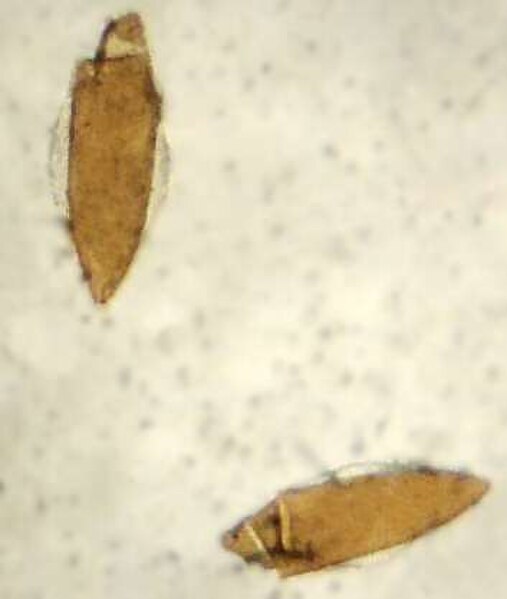An insect repellent is a substance applied to the skin, clothing, or other surfaces to discourage insects from landing or climbing on that surface. Insect repellents help prevent and control the outbreak of insect-borne diseases such as malaria, Lyme disease, dengue fever, bubonic plague, river blindness, and West Nile fever. Pest animals commonly serving as vectors for disease include insects such as flea, fly, and mosquito; and ticks (arachnids).
A mosquito coil
A cowhorn container for mosquito-repelling pitch oil (a by-product of the distillation of wood tar) on display at the Nordiska museum, Stockholm.
A mosquito on a bottle of "natural" insect repellent
Insect repellent made with natural, plant-based active ingredients is less effective than conventional repellents
Mosquitoes, the Culicidae, are a family of small flies consisting of 3,600 species. The word mosquito is Spanish and Portuguese for little fly. Mosquitoes have a slender segmented body, one pair of wings, three pairs of long hair-like legs, and specialized, highly elongated, piercing-sucking mouthparts. All mosquitoes drink nectar from flowers; females of some species have in addition adapted to drink blood. Evolutionary biologists view mosquitoes as micropredators, small animals that parasitise larger ones by drinking their blood without immediately killing them. Medical parasitologists view mosquitoes instead as vectors of disease, carrying protozoan parasites or bacterial or viral pathogens from one host to another.
Mosquito
Adult yellow fever mosquito Aedes aegypti, typical of subfamily Culicinae. Male (left) has bushy antennae and longer palps than female (right)
Anopheles eggs with side floats
Electron micrograph of a culicine egg








